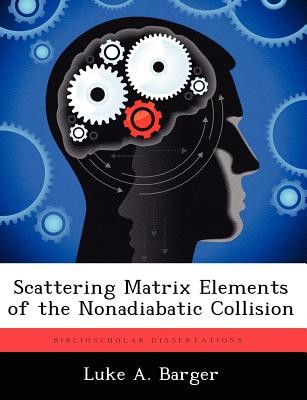
- We will send in 10–14 business days.
- Author: Luke A Barger
- Publisher: BiblioScholar
- ISBN-10: 1249592682
- ISBN-13: 9781249592686
- Format: 18.9 x 24.6 x 0.7 cm, softcover
- Language: English
- SAVE -10% with code: EXTRA
Scattering Matrix Elements of the Nonadiabatic Collision (e-book) (used book) | bookbook.eu
Reviews
Description
Scattering matrix elements are calculated for the nonadiabatic inelastic collision . This calculation utilizes the effective potential energy surfaces for this collision generated by Garvin along with a correction to the asymptotic H2 potential. Wavepackets are propagated on these surfaces using a split-operator propagator. This propagation yields correlation functions between reactant and product Møller states which are used to calculate the scattering matrix elements with the channel packet method. These scattering matrix elements represent probability amplitudes for the collision to result in changes to the electronic fine structure and to the rotational and vibrational eigenstates of the H2 molecule over a range of energies, and are presented, discussed and compared to previous work in which the hydrogen bond length was fixed at its equilibrium value. A method for approximating probability for the reaction B+H2 BH+H as a function of collisional energy is presented.
EXTRA 10 % discount with code: EXTRA
The promotion ends in 21d.00:26:16
The discount code is valid when purchasing from 10 €. Discounts do not stack.
- Author: Luke A Barger
- Publisher: BiblioScholar
- ISBN-10: 1249592682
- ISBN-13: 9781249592686
- Format: 18.9 x 24.6 x 0.7 cm, softcover
- Language: English English
Scattering matrix elements are calculated for the nonadiabatic inelastic collision . This calculation utilizes the effective potential energy surfaces for this collision generated by Garvin along with a correction to the asymptotic H2 potential. Wavepackets are propagated on these surfaces using a split-operator propagator. This propagation yields correlation functions between reactant and product Møller states which are used to calculate the scattering matrix elements with the channel packet method. These scattering matrix elements represent probability amplitudes for the collision to result in changes to the electronic fine structure and to the rotational and vibrational eigenstates of the H2 molecule over a range of energies, and are presented, discussed and compared to previous work in which the hydrogen bond length was fixed at its equilibrium value. A method for approximating probability for the reaction B+H2 BH+H as a function of collisional energy is presented.


Reviews